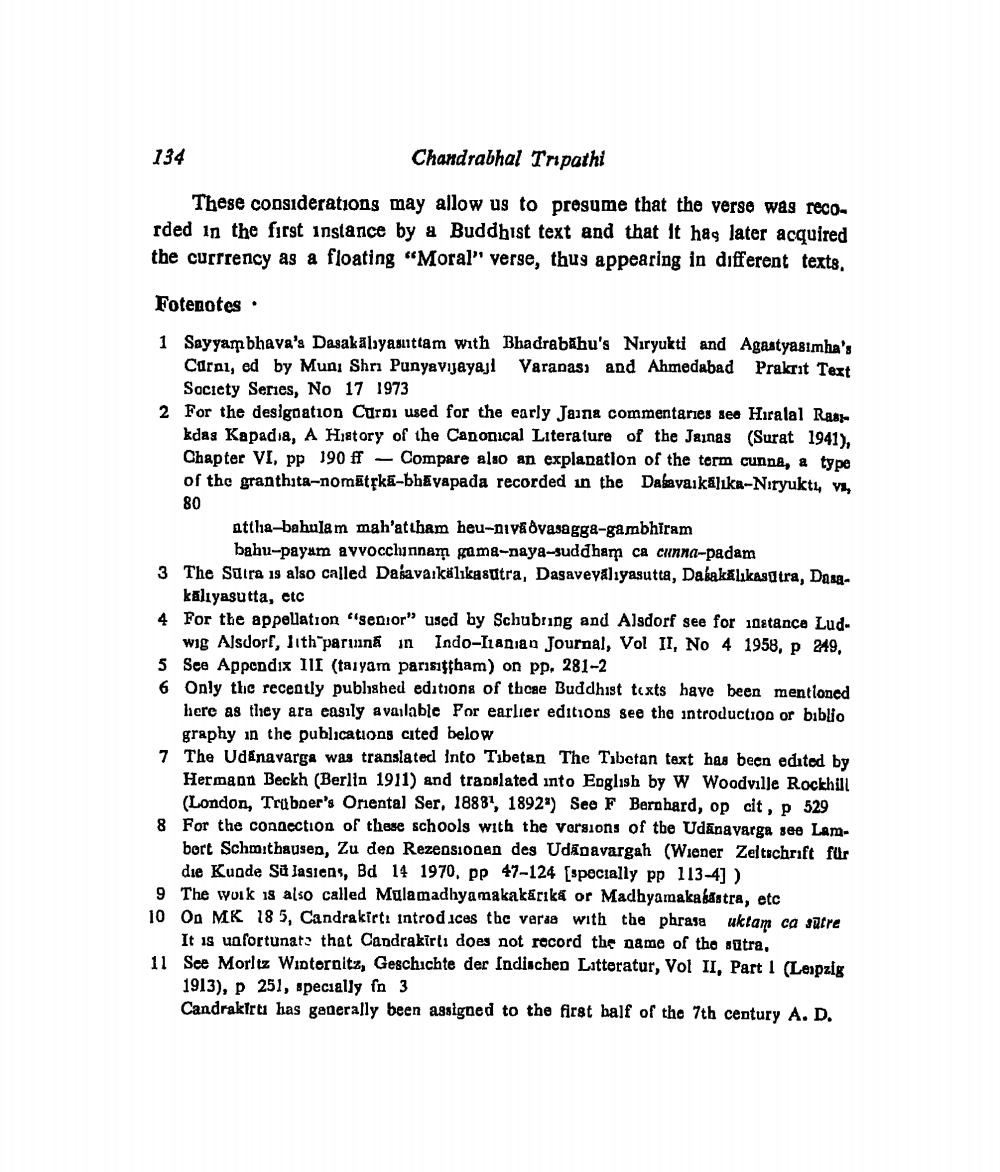________________
134
Chandrabhal Tripathi
These considerations may allow us to presume that the verse was recorded in the first instance by a Buddhist text and that it has later acquired the currency as a floating “Moral" verse, thus appearing in different texts.
Fotenotes
1 Sayyam bhava's Dasakalyasuttam with Bhadrabahu's Niryukti and Agastyasimha's
Carni, ed by Mun Shri PunyaVijayaji Varanas) and Ahmedabad Prakrit Text
Society Series, No 17 1973 2 For the designation Curoi used for the early Jaina commentaries see Hıralal Ras
kdag Kapadia, A History of the Canonical Literature of the Jainas (Surat 1941), Chapter VI, pp 190 ff - Compare also an explanation of the term cunna, a type of the granthita-nomātika-bhEvapada recorded in the Dalavaikälika-Niryuktu vu, 80
attha-bahulam mah'attham heu-niya vasagga-gambhiram bahu-payam avvocchinnam gama-Daya-suddham ca canna-padam
thu payaman Dayaklakastra. Dasay 3 The Satra is also called Dasavaikälikasutra, Dasaveyalıyasutta, Dakakálikasdtra, Dang
kaliyasutta, etc 4. For the appellation "genior" used by Schubring and Alsdorf see for 10stance Lud
wig Alsdorf, lith parink in Indo-IlaDian Journal, Vol II, No 4 1958, p 249, 5 See Appendix III (tanyam parisittham) on pp. 281-2 6 Only the recently published editions of thcae Buddhist texts have been mentioned
here as they are easily available Por earlier editions see the introduction or biblio
graphy in the publications cited below 7 The Udinavarga was translated into Tibetan The Tibetan text has been edited by
Hermann Beckh (Berlin 1911) and translated into English by W Woodville Rockhill
(London, Truboer's Onental Ser, 1888, 1892) See F Bernhard, op cit, p 529 8 For the connection of these schools with the versions of the Udanavarga see Lam
bert Schmithausen, Zu deo Rezensionen des Udápavargah (Wiener Zeitschrift für
die Kunde Så lastens, Bd 14 1970. pp 47-124 [specially pp 113-4] ) 9 The work is also called Mulamadhyamakakárka or Madhyamakabastra, etc 10 On MK 185, Candrakirto introduces the veraa with the phrasa uktam ca süre
It is unfortunate that Candrakirli does not record the name of the sutra, 11 See Moritz Wintornitz, Geschichte der Indischen Litteratur, Vol II, Part 1 (Leipzig
1913), p 251, specially fn 3 Candrakleti has generally been assigned to the first half of the 7th century A. D.




